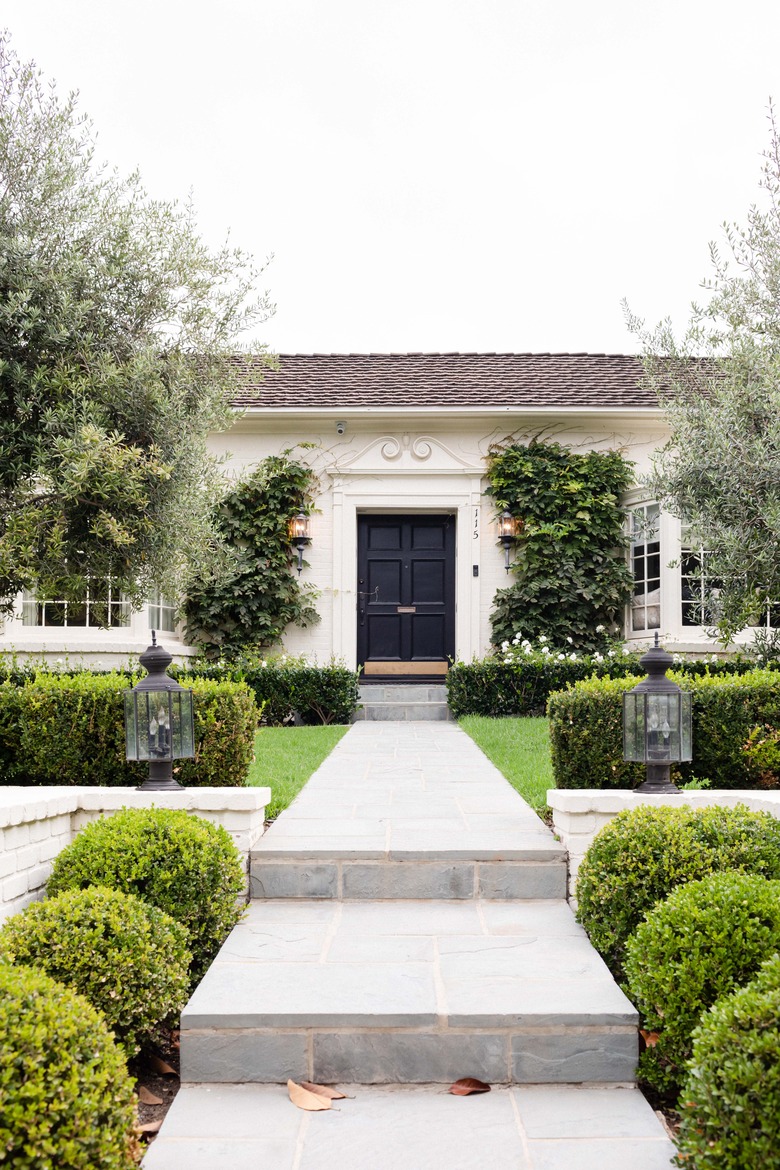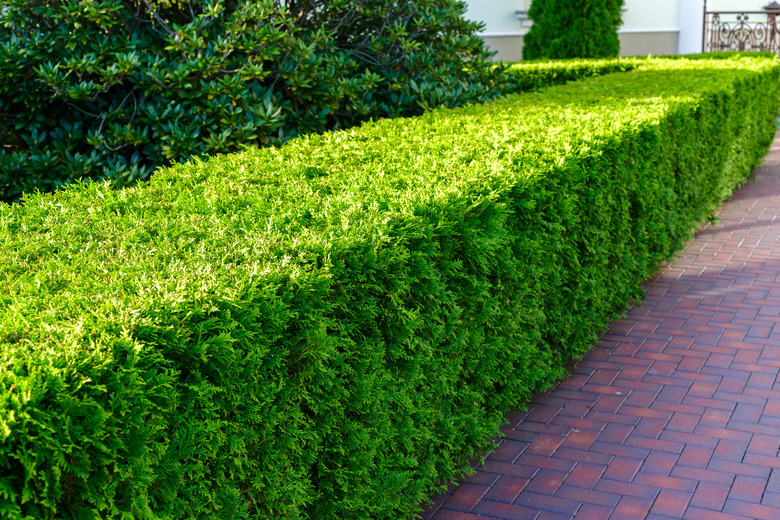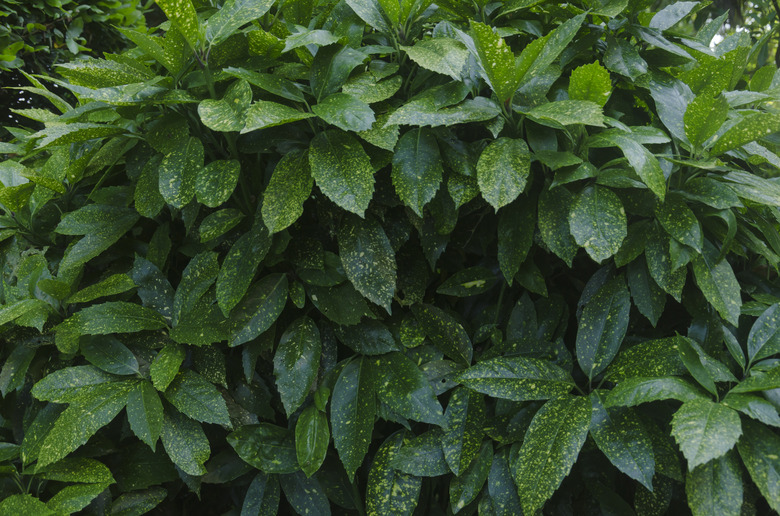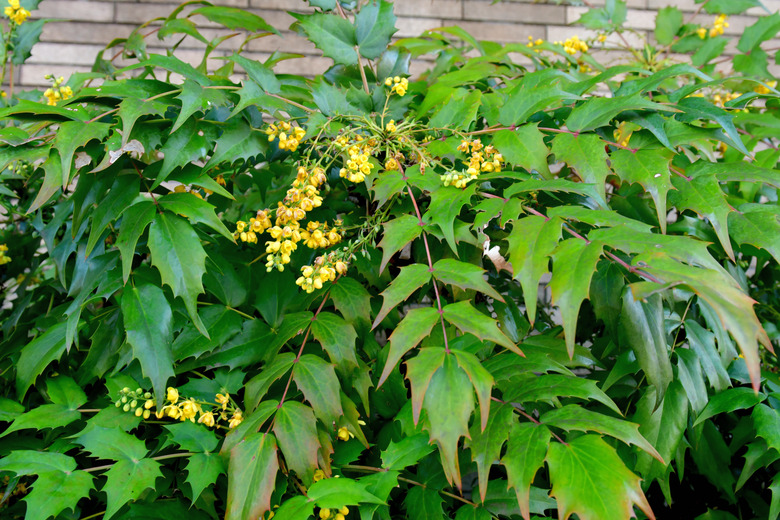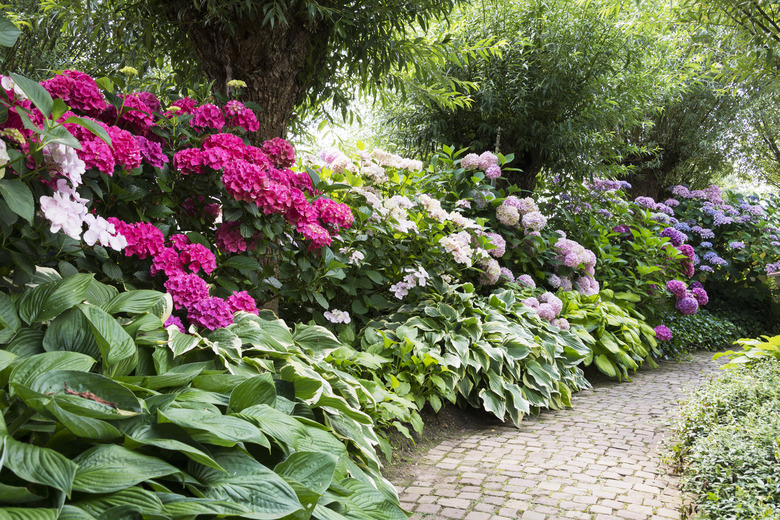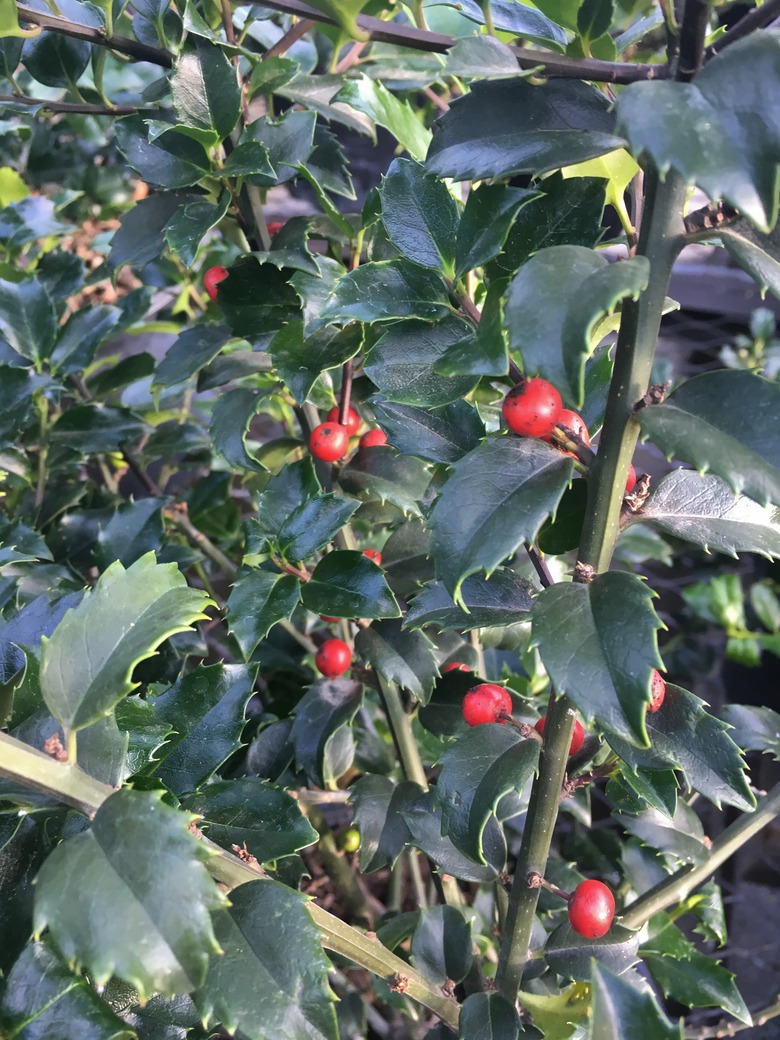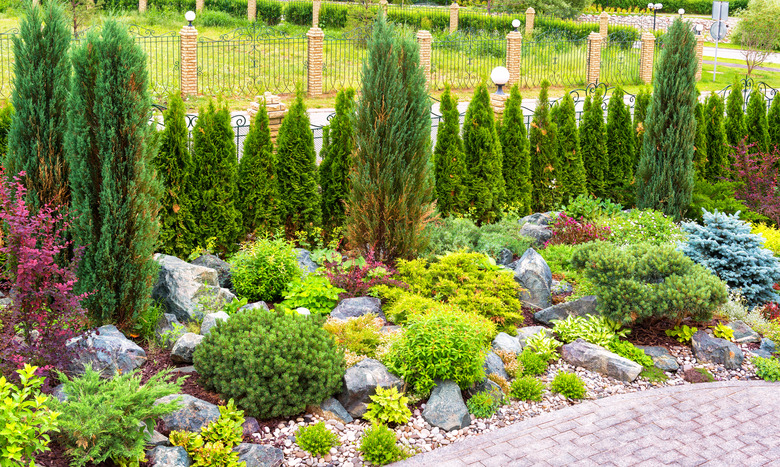6 Best Evergreen Shrubs For Your Landscape
We may receive a commission on purchases made from links.
Evergreen shrubs won't give you a fiery fall show, but they are absolutely tops for year-round color, texture and privacy. An evergreen hedge protects you from winter wind and noisy neighbors as effectively in January as in July, and there are literally thousands of species from which to choose. Whether you want flowers or berries or tiny leaves or big ones, there's an evergreen out there for you. Just be sure to pick shrubs that thrive in your hardiness zone and that grow well in the exposure your site offers.
1. Common Boxwood Shrubs
1. Common Boxwood Shrubs
If boxwood (Buxus sempervirens) makes you think of precisely sheared hedges or fancy topiaries, you're not wrong. It's often chosen for use in formal gardens and is called the "aristocrat of shrubs." With its tiny, rounded leaves and lustrous, dark-green color, boxwood can play many different roles in the landscape. If you don't want precisely sheared evergreen shrubs, leave boxwood to its natural and very attractive shape. It will slowly grow to a height of 20 feet tall and wide but can be kept at any desired height by pruning.
Boxwood thrives in U. S. Department of Agriculture (USDA) plant hardiness zones 5 through 8, according to Arbor Day Foundation. It grows best in a site with either full sun or partial sun — that is, at least four hours a day of exposure. Though tolerant of different soil types, boxwood does require well-draining soil. Any gardener in a region with wild winter weather should plant boxwood in a protected location or risk shrub discoloration.
2. Japanese Aucuba Shrubs
2. Japanese Aucuba Shrubs
If you need evergreen plants for shady areas, consider Japanese aucuba (Aucuba japonica). It's a broadleaf evergreen shrub with upright stems that grows to 10 feet tall with a 6-foot spread, lighting up the landscape with bright spots of gold on shiny, green foliage.
Japanese aucuba is one of those evergreen shrubs with year-round appeal, offering arching branches and dense foliage year-round and tiny purple flowers in spring. The trees are either male or female, and you'll need both to get the showy red berries that appear in fall and last through winter.
This shrub is a perennial in USDA plant hardiness zones 7 through 10. It is known for its shade tolerance and can grow happily in areas of deep shade but also thrives in dappled sunlight. It prefers a soil rich in organic matter that also offers good drainage.
3. Tall Oregon Grape Shrubs
3. Tall Oregon Grape Shrubs
The tall Oregon grape (Berberis aquifolium, formerly Mahonia aquifolium), also commonly called mahonia, is an American native, found extensively in the Pacific Northwest. This woodland beauty can grow to 10 feet but often remains half that size in cultivation. The branches are upright and slightly arching, and the prickly leaves — shaped like holly leaves — make a mahonia hedge a great site for wild bird nesting. These evergreen shrubs are perennials in USDA plant hardiness zones 5 through 9, preferring a shady location out of the hot summer sun.
Tall Oregon grape's new spring growth is a light green or soft copper color. The flowers appear in early spring, displaying sprays of buttery-yellow blossoms with a sweet fragrance, attracting hummingbirds and bees. These are followed by the "grapes," actually masses of dusky-blue berries that can be used for jams. As the cooler weather sets in, the green foliage matures into shades ranging from bright red to burgundy, making for exceptional winter color.
4. Azaleas or Rhododendron Shrubs
4. Azaleas or Rhododendron Shrubs
Azaleas and rhododendron (Rhododendron spp.) are flowering shrubs in the same genus with similar features. They make exceptional low hedges with their shiny leaves and wealth of gorgeous spring or summer blossoms. You can find them with flowers in many hues of pink, red, yellow and purple in addition to white. Some types rebloom in mild climates, providing blossoms during much of the warm season.
If you are considering azalea, make sure to select an evergreen variety since deciduous azaleas (those that lose their leaves in winter) are also available. You'll find perennial evergreen species in USDA plant hardiness zones 5 through 9. Most prefer a location with some shade and soil that is acidic and well-draining. Their mature height depends on the species and cultivar, and you can find low-growing evergreen shrubs for ground cover as well as upright shrubs that shoot up to 20 feet or more.
5. Blue Holly Shrubs
5. Blue Holly Shrubs
Blue holly (Ilex x meserveae) looks like Christmas holly except that the glossy leaves are blue-green. Like with most holly plants, the leaves of the blue holly are pointy, sharp and very ornamental. These upright evergreen shrubs grow to 15 feet tall with a spread of 10 feet and are known for their brilliant red fruit in autumn. White flowers appear in late spring but are not particularly showy. You can prune and shape these plants throughout their lives and propagate them from cuttings taken in early fall.
Holly likes sun, so site it where it has either full sun or partial sun. It also needs well-draining soil. This fast-growing shrub is hardy in USDA plant hardiness zones 3 through 7. The berries look festive and hang on the shrubs much of the winter, adding color and decorative appeal. In order to grow berries, you'll need to plant both male and female plants.
6. American Arborvitae Shrubs
6. American Arborvitae Shrubs
American arborvitae (Thuja occidentalis) is among the most popular evergreen shrubs in the U.S., and it didn't get there on looks alone. It is an attractive plant with flattened, lacy sprays of aromatic needles in emerald green to golden, and there are many cultivars from which to choose. Another selling point is the shrub's rapid growth in almost any cool to mild region. These shrubs thrive in USDA plant hardiness zones 2 through 8 and can shoot up 3 or 4 feet per year.
The shrub matures in a pyramidal shape with exceptionally dense growth. Depending on the cultivar, it can reach 40 feet tall with a 15-foot spread, according to the Missouri Botanical Garden. This makes American arborvitae a top choice for privacy screens or windbreaks. Extremely cold hardy, these arborvitae like well-drained soil and adequate water. A layer of mulch will help to keep the soil moist.
